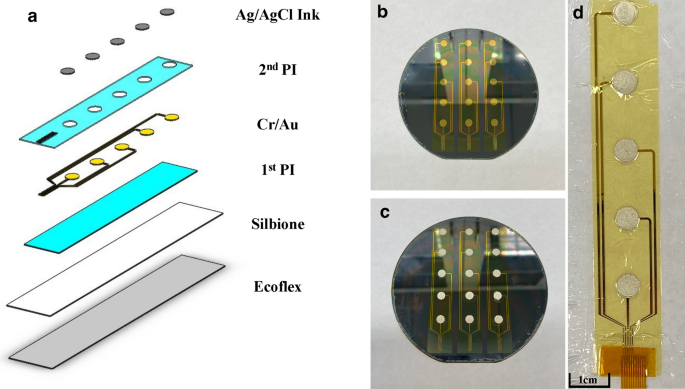2022-11-14 カリフォルニア大学サンディエゴ校(UCSD)
この新しく開発された装置により、自律神経系(闘争・逃走 vs 休息・消化)のバイオタイプの頸部電気生理学的証拠を(初めて)確認した。このバイオタイプは、自律神経系または不随意神経系に対するさまざまなチャレンジにおいて驚くほど一貫していた。
この装置は、首の前面下部から背面上部まで伸びる柔軟な電極アレイを備えており、研究者はさまざまな神経の電気的活動を捉えることができるようになる。また、データをリアルタイムで視覚化できるユーザーインターフェースや、ストレスに対する神経系の反応に応じて人々をグループ化するカスタムアルゴリズムも搭載している。
研究者らは、自律神経のバイオタイプ(ストレスに対して不随意神経系が同様の反応を示す患者群)を調べるため、氷水に手を入れて保持し、時間を計って呼吸運動をさせる一連のテストを行った。電極アレイは、氷水への挑戦の前後と呼吸運動の間に、被験者の頸部神経信号(研究チームでは頸部電気神経グラフと呼んでいる)と心拍数を記録した。
その結果、被験者のバイオタイプは、両テストで神経発火と心拍数が増加した被験者と、逆の傾向を示した被験者の2つに分類された。また、この装置のユニークなアルゴリズムにより、氷水チャレンジによる痛みなどのストレス要因に対する特定の神経集団の反応の違いや、時間差呼吸チャレンジによる発汗や心拍数の上昇などの身体症状の違いを特定できる可能性がある。
<関連情報>
- https://today.ucsd.edu/story/researchers-create-novel-device-to-measure-nerve-activity-for-treatment-of-sepsis-ptsd
- https://www.nature.com/articles/s41598-022-21817-w
自律神経ストレス負荷時における頸部電極撮影が可能な柔軟な粘着性表面電極アレイの開発 A flexible adhesive surface electrode array capable of cervical electroneurography during a sequential autonomic stress challenge
Yifeng Bu,Jonas F. Kurniawan,Jacob Prince,Andrew K. L. Nguyen,Brandon Ho,Nathan L. J. Sit,Timothy Pham,Vincent M. Wu,Boris Tjhia,Andrew J. Shin,Tsung-Chin Wu,Xin M. Tu,Ramesh Rao,Todd P. Coleman & Imanuel Lerman
Scientific Reports Published:14 November 2022
DOI:https://doi.org/10.1038/s41598-022-21817-w

Abstract
This study introduces a flexible, adhesive-integrated electrode array that was developed to enable non-invasive monitoring of cervical nerve activity. The device uses silver-silver chloride as the electrode material of choice and combines it with an electrode array consisting of a customized biopotential data acquisition unit and integrated graphical user interface (GUI) for visualization of real-time monitoring. Preliminary testing demonstrated this electrode design can achieve a high signal to noise ratio during cervical neural recordings. To demonstrate the capability of the surface electrodes to detect changes in cervical neuronal activity, the cold-pressor test (CPT) and a timed respiratory challenge were employed as stressors to the autonomic nervous system. This sensor system recording, a new technique, was termed Cervical Electroneurography (CEN). By applying a custom spike sorting algorithm to the electrode measurements, neural activity was classified in two ways: (1) pre-to-post CPT, and (2) during a timed respiratory challenge. Unique to this work: (1) rostral to caudal channel position-specific (cephalad to caudal) firing patterns and (2) cross challenge biotype-specific change in average CEN firing, were observed with both CPT and the timed respiratory challenge. Future work is planned to develop an ambulatory CEN recording device that could provide immediate notification of autonomic nervous system activity changes that might indicate autonomic dysregulation in healthy subjects and clinical disease states.


